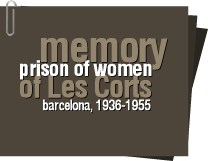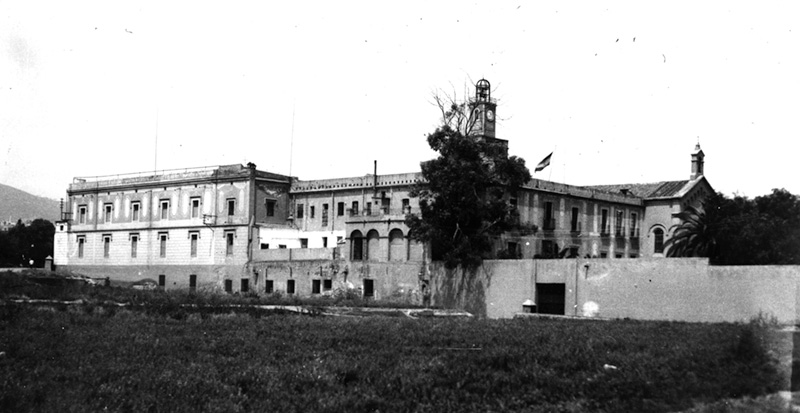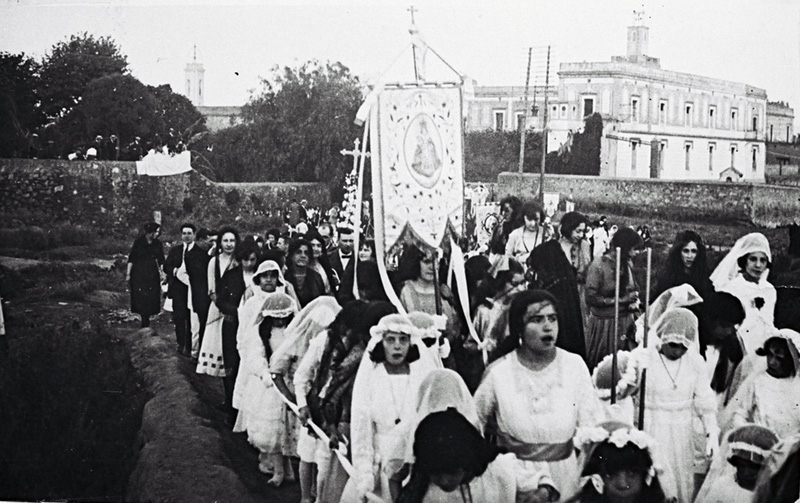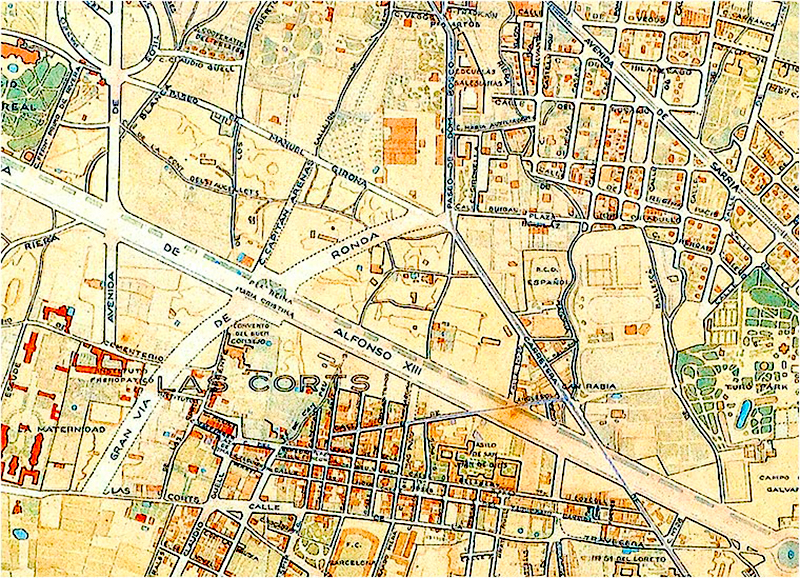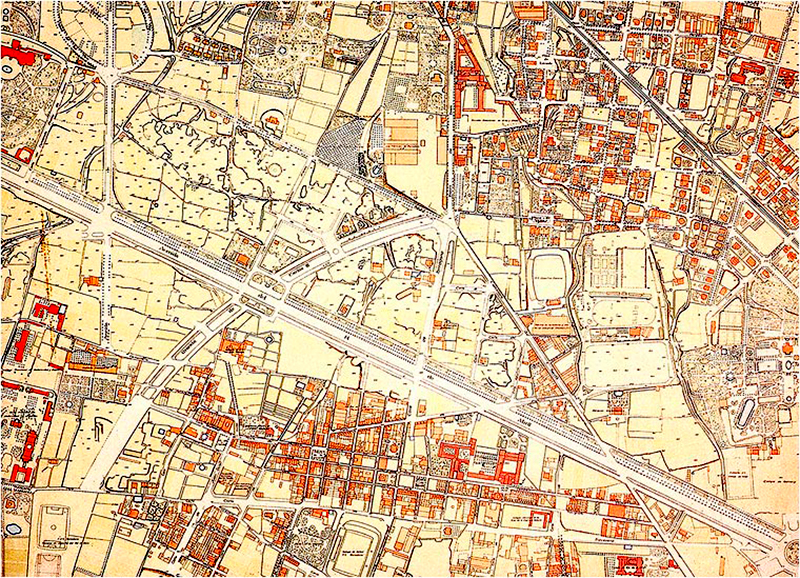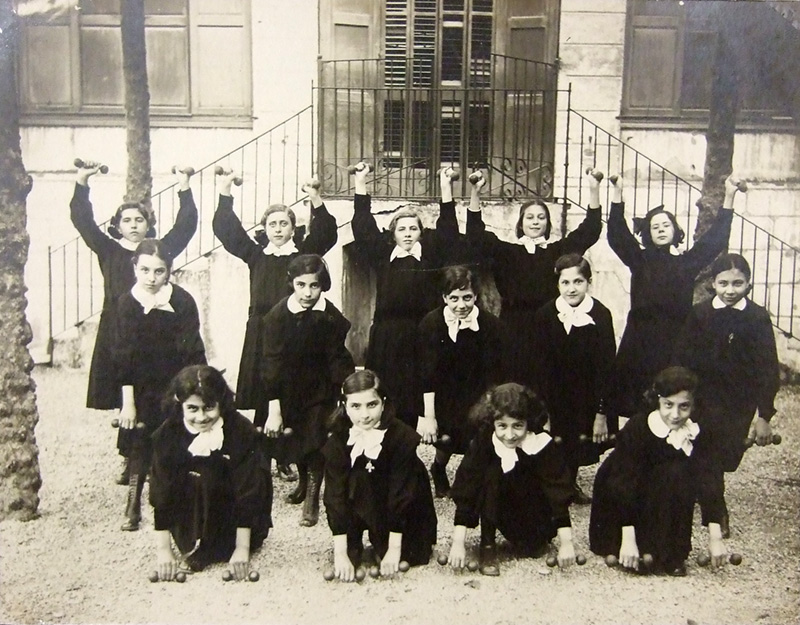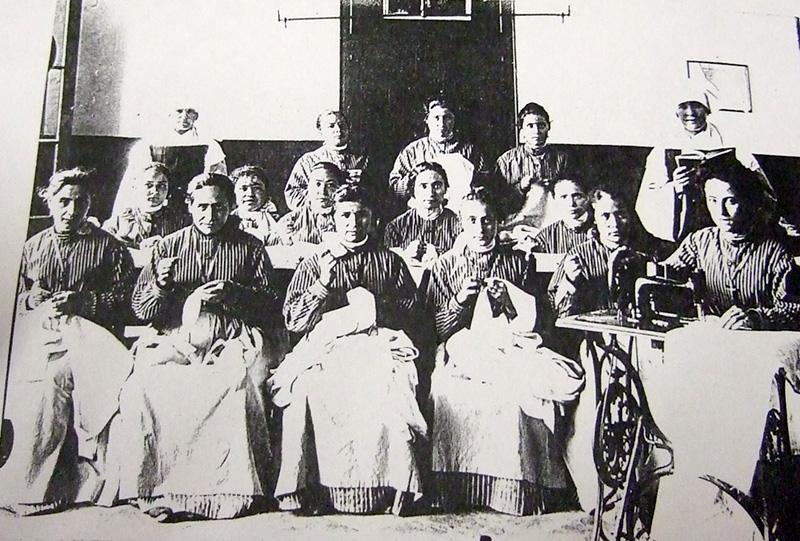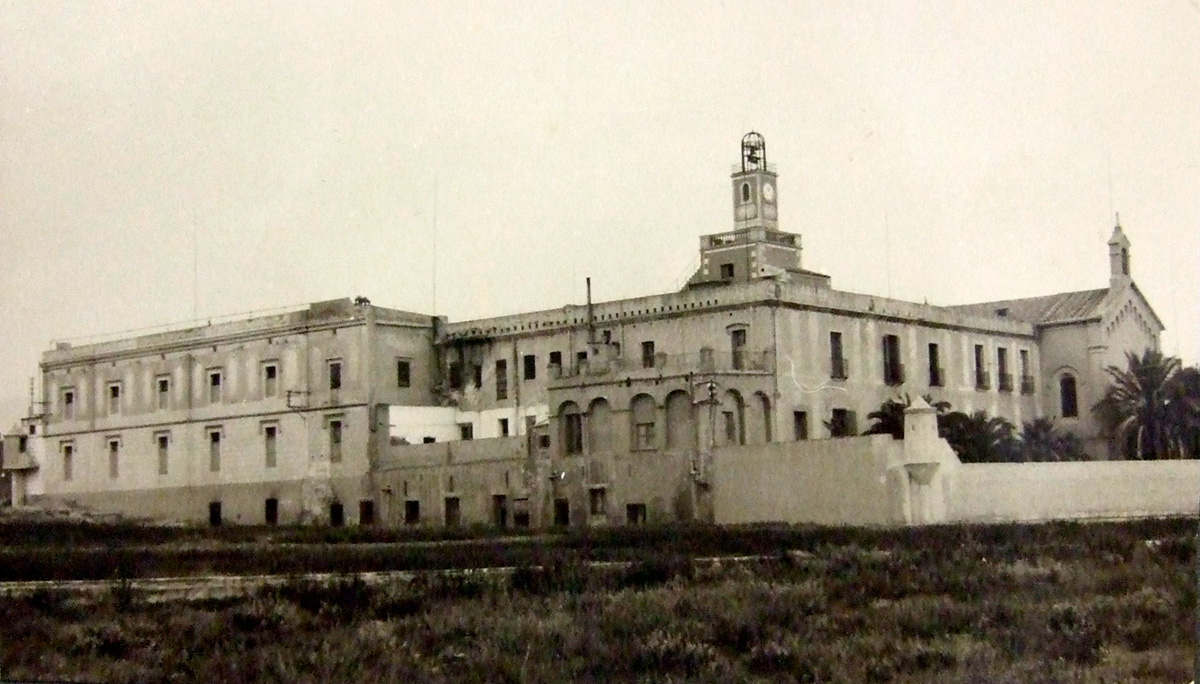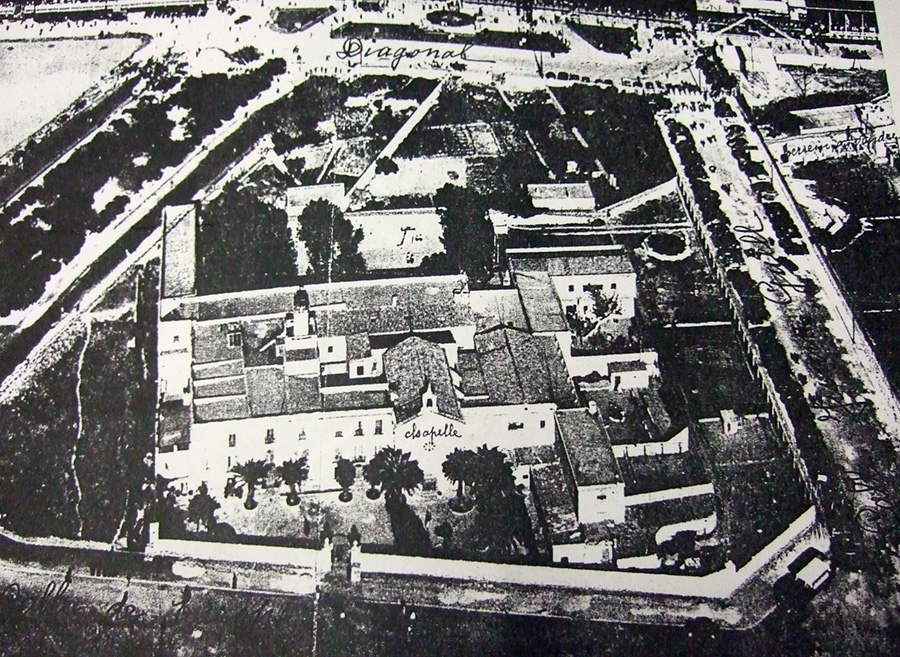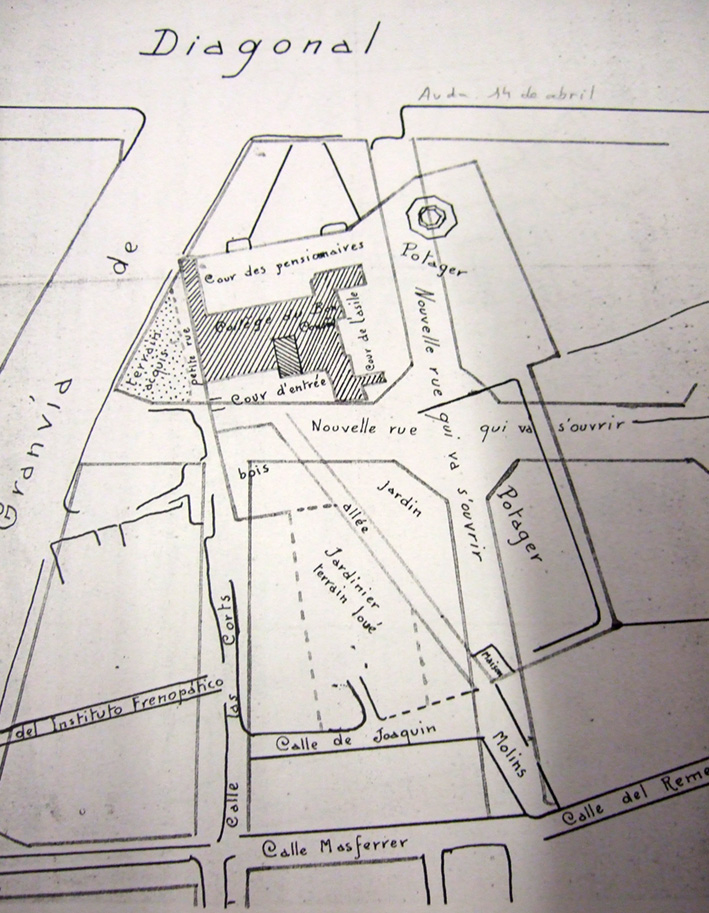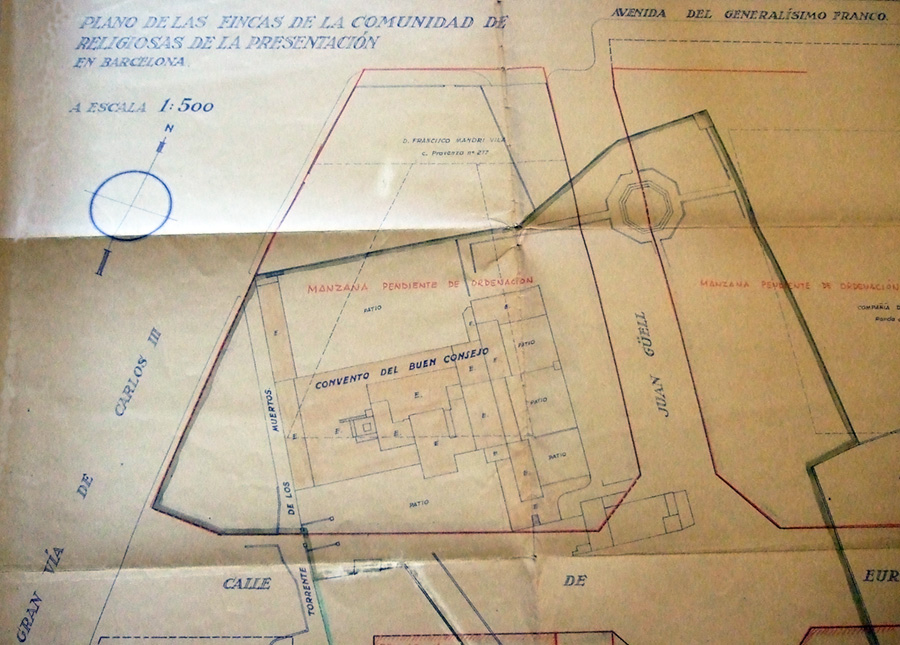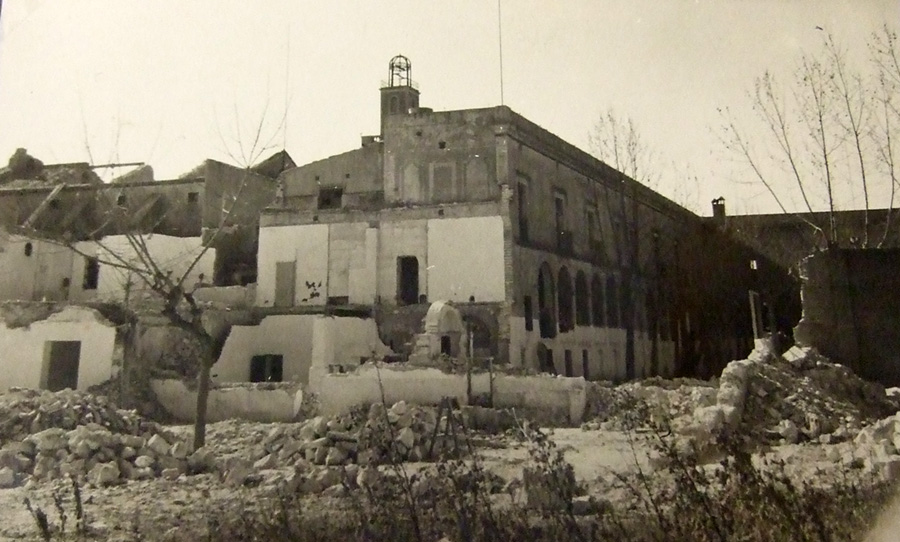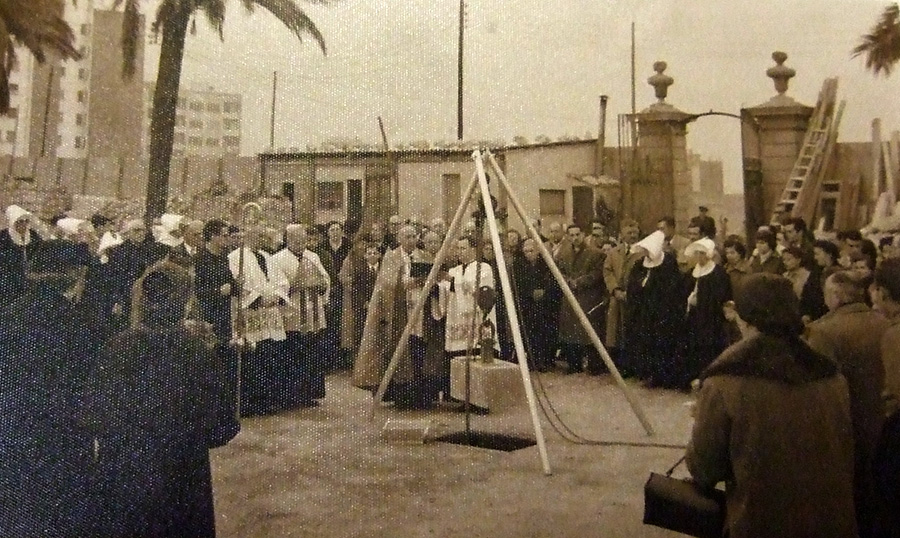The building of the Les Corts prison has a history that extends far beyond its use as a penitentiary. In the mid-18th century, the Duran family commissioned the construction of a large building surrounded by gardens, which were notable for their centuries-old cypress trees.
In the mid-18th century, on the grounds of an old medieval farmhouse along the road from Les Corts to Sarrià, the Duran family commissioned the construction of a large square building, two stories high, with a tower and chapel, surrounded by gardens that featured centuries-old cypress trees. This is where the name by which it became known originated: Can Duran or Feló.
By 1864, the so-called Asylum of Bon Consell, for "lost or wayward young women," founded by the Bishopric of Barcelona and administered by a Board of Ladies, was already operating in Can Duran. Three years later, its management was entrusted to the congregation of the Adoratrices, also known as the Micaelas, a group then specializing in correctional-moral work through religious discipline and sewing tasks. However, this arrangement was short-lived: in 1870, the administration passed to the Congregation of the Dominican Sisters of Charity of the Presentation of the Blessed Virgin, of French origin.
In 1884, the family who owned the property bequeathed the Can Duran house-tower and its estate to the Bishop of Vich, Josep Morgades. A few years later, he sold it to the Dominican Sisters with a so-called "pious clause," which stipulated that part of the estate be reserved for an asylum where "wayward young women would be housed, educated, and morally reformed free of charge," while the remaining portion of the estate would be used for a school providing Catholic instruction and education to orphaned or abandoned girls, as well as to paying female students.
By 1890, the estate was being managed by 25 nuns. That same year, the new neo-Gothic style chapel was completed, along with the expansion and renovation of the old farmhouse, both funded by the aristocrat Dorotea de Chopitea. In 1900, the chapel was consecrated and blessed by Bishop Morgades:
“The façade is modest and clean, with a cross atop the apex above a small belfry housing a bell in excellent condition. A public clock is installed on the building adjacent to the church, which is inhabited by the sisters, who oversee its maintenance and repair at their own expense.”
In this photograph, an entire side of the school building can be observed. To the left, in the background, stands the bell tower of the Remei.
The main entrance, which led to an avenue flanked by trees, opened onto Joaquim Molins Street, No. 11, which still exists today. The perimeter of the site was defined by the current Plaza de Maria Cristina and the Diagonal to the north; Les Corts Street to the west; Joaquim Molins Street to the south; and the Clara Campoamor Gardens to the east.
In the following maps, we can observe the location of the original Buen Consejo building: the municipal map from 1890, before the construction of Avenida Diagonal; the 1920 map by Federico Armenter de Aseguinolaza; the 1929 Guide-Map; the Boves map, also from 1929; and, finally, the Topographic Service map of the Barcelona City Council from 1930-1940. Throughout these years, Avenida Diagonal was successively renamed Avenida de Alfonso XIII and Avenida del 14 de Abril.
The main building was divided into three sections, with the following occupancy data from 1910:
- School or "boarding for young ladies," with a capacity of up to 190 students.
- Orphanage for girls aged 9 to 21, housing 60 residents.
- Asylum for "wayward" young women aged 14 to 25, engaged in sewing and laundry work, with 40 residents.
In the summer of 1936, the building was occupied by militias. Shortly thereafter, it was seized by the Generalitat's Prison Committee and converted into a Women's General Correctional Facility. In 1939, it was requisitioned by the Directorate General of Prisons and transformed into a Francoist "provincial prison."
This time, another female religious order was entrusted with the internal service of the institution: the Daughters of Charity of Saint Vincent de Paul, a female order that had been working in Spanish women's prisons since 1880. Despite recurring claims dating back to 1939, it was not until 1955 that the Dominican Sisters were able to recover ownership of the property.
However, by then, new urban planning projects related to the final stretch of Generalísimo Franco Avenue (now Diagonal) had severely impacted the estate. The extension of Joan Guëll Street and the plan for Europa Street, conceived in the early 1950s, had effectively divided the original garden, as can be seen in these images.
The Dominican nuns immediately proceeded with the demolition of the buildings, completing the work in 1958. Meanwhile, the process of selling the various parcels, which began in 1957, was finalized in 1964.
Although the cornerstone for a new school — as mandated by the pious clause of 1890 — was laid on the site in December 1956, in 1958, the Barcelona City Council denied authorization for its construction, and ultimately, no new school was built.
The estates sold by the Dominicans eventually ended up in the hands of the Núñez y Navarro construction company during a period of intense real estate speculation. Finally dedicated to residential and commercial use, much of the area was taken up by the El Corte Inglés department store on Diagonal Avenue, which opened in 1974.
Sources: ARCHIVO DE LA CONGREGACIÓN DE LAS HERMANAS DE LA CARIDAD DOMINICAS DE LA PRESENTACIÓN DE LA SANTÍSIMA VERGEN DE BARCELONA. Our thanks to María Dolores García Maquívar.
NAVARRO Y MOLLEVÍ, I. (1993): Masías de Les Corts: torres, masías y otras casas, Barcelona, Barcelona City Council; MOLINA JAVIERRE, Pilar: La Cárcel de Mujeres de Barcelona. Les Corts (1939-1959), Barcelona; ALBERDI, Ramón (2009): Dorotea de Chopitea y de Villota, 1816-1891. Construir una Barcelona para todos, Barcelona; BURDEOS,, a. (1962): Una dama barcelonesa del Ochocientos. La sierva de Dios Doña Dorotea de Chopitea, viuda de Serra; GARCIA GARGALLO, M. (2002): The teaching of the Church in the city of Barcelona. Statistical directory. Doctoral thesis of the University of Barcelona, http://hdl.handle.net/10803/1987; HERNÁNDEZ HOLGADO, F. (2022): ‘De Correccional General de Mujeres a prisión provincial del franquismo: la Cárcel de Mujeres de Las Cortes (1936-1955)’, in RICART ULLDEMOLINS, N.; GUIXÉ COROMINES, J. and HERNÁNDEZ HOLGADO, F.: Un sitio inacabado: espacio de memoria, monumento prisión de mujeres de Les Corts, Valencia, pp. 26-80.

